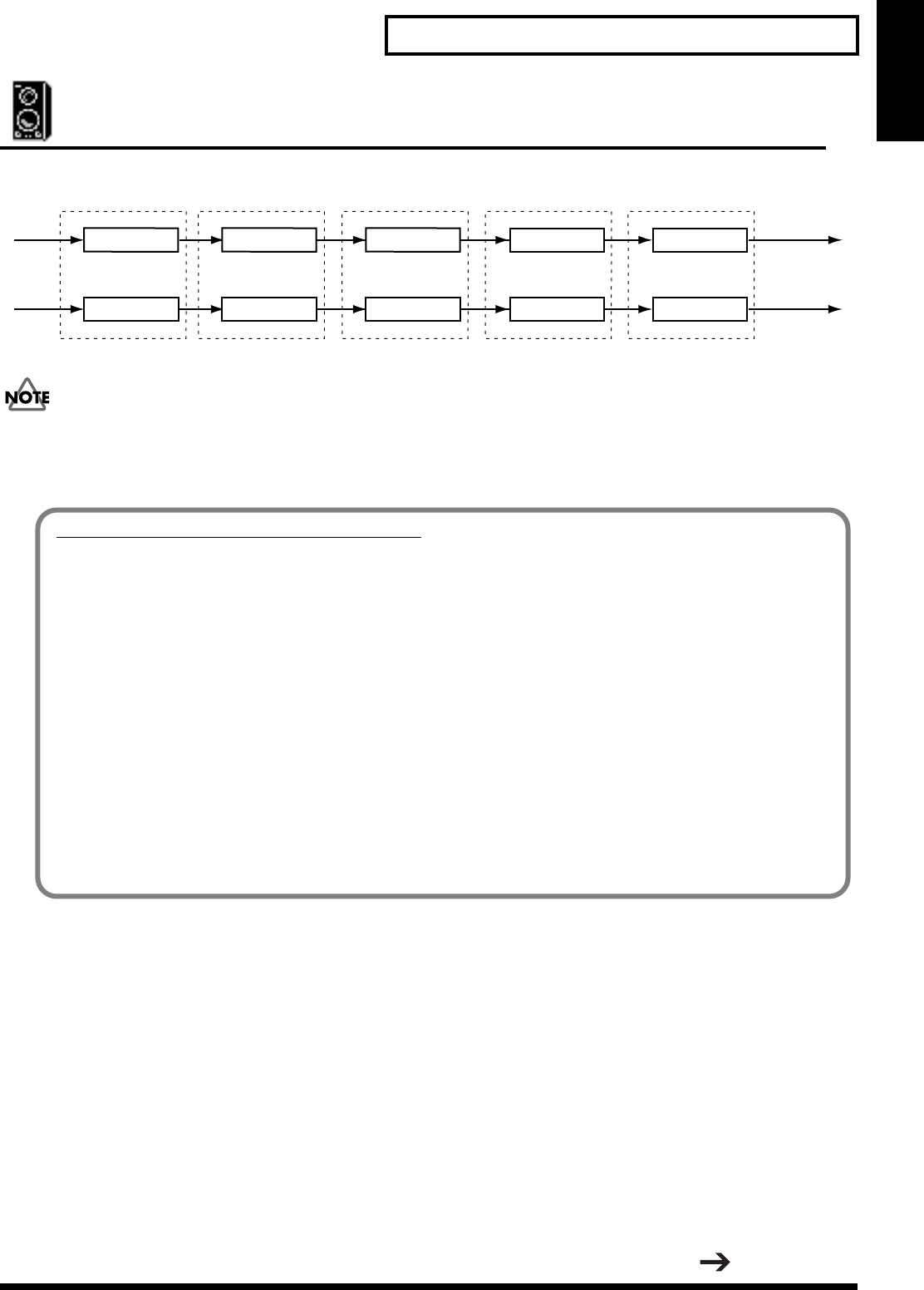
95
Algorithm List
Algorithm List
Speaker Modeling
Models a variety of speaker characteristics ranging from those of High-end professional monitor speakers used
as the standard at studios around the world to those of speakers of small-sized TV sets and portable radios.
fig.08-81
• Speaker Modeling is adjusted so that its optimal effect is achieved when a Roland Powered Monitor DS-90 is
used in digital connection. Its effect may not be fully achieved with other types of speakers.
• “Mic Modeling” cannot be used on the projects with 64kHz or higher sampling rate.
Input L
Input R
Output L
Output R
Hi Freq Trim
Limiter
Limiter
SP Modeling
SP Modeling
BassCut Freq
BassCut Freq
Lo Freq Trim
Lo Freq Trim
Hi Freq Trim
Speaker types applicable for modeling
The characteristics of the following types of speakers can be modeled. Set the desired type for Model.
THRU: No modeling is to be performed.
Super FLAT: DS-90 is corrected by modeling to produce wider-range and untwisted sounds.
Powered GenBlk: Typical model of powered monitor (two-way type, the woofer diameter = 170 mm (6-1/
2 inches))
Powered E-Bas: Powered monitor characterized in delightful sound quality
Powered Mack: Powered monitor characterized in well-extended low frequency band sounds
Small Cube: Small-sized full-range speaker widely used in recording studios
White Cone: Enclosed-type two-way speaker widely used in recording studios, characterized in
white woofers.
White C +tissue: Mild sounds from “White Cone” Tweeter covered with tissue paper
Small Radio: Pocket-type small-sized radio
Small TV: Speaker attached to the 14-inch TV set
Boom Box: Radio cassette recorder
BoomBox LoBoost: Radio cassette recorder with the low frequency band enhanced
* Use “THRU” for clear comparison between sounds with and without modeling.
Continued...
2400_app_e.book 95 ページ 2005年4月28日 木曜日 午後1時14分


















